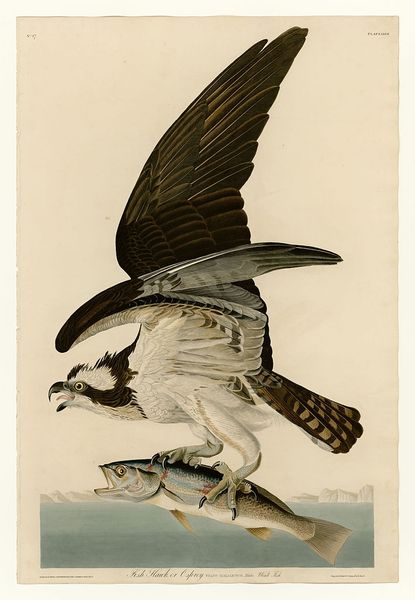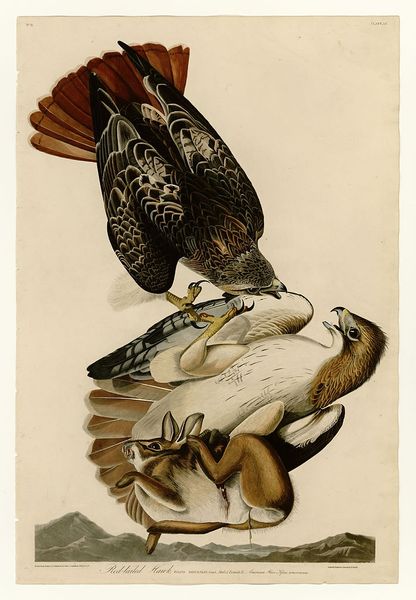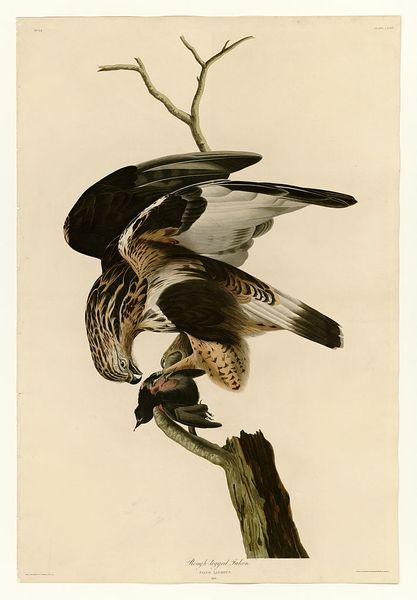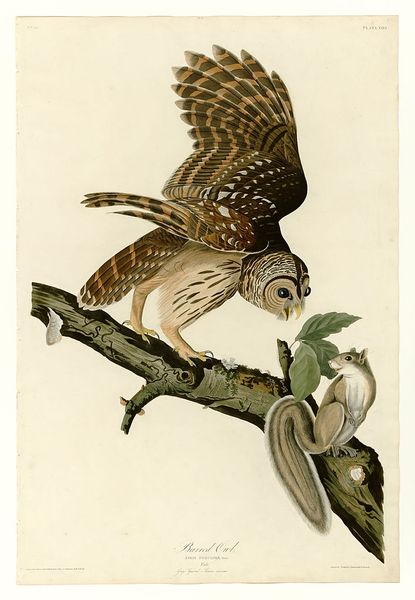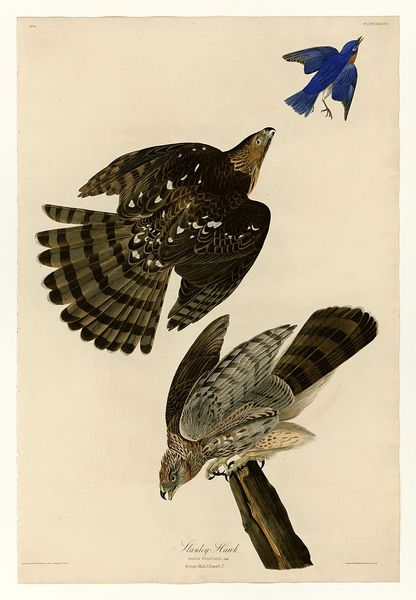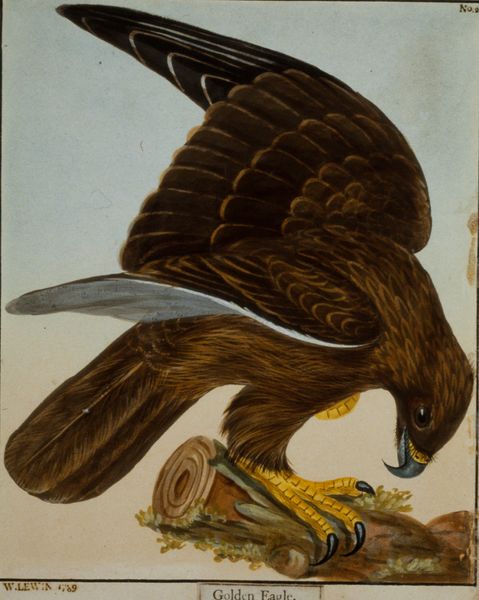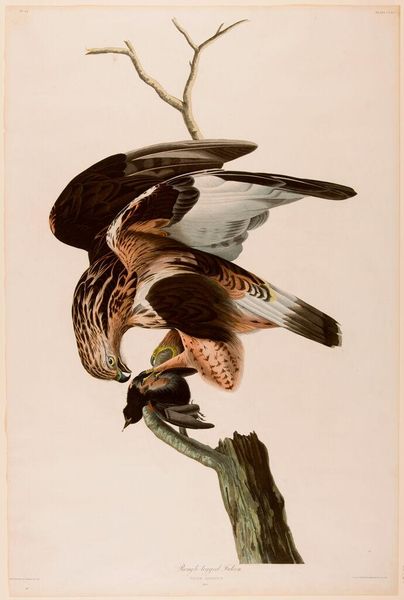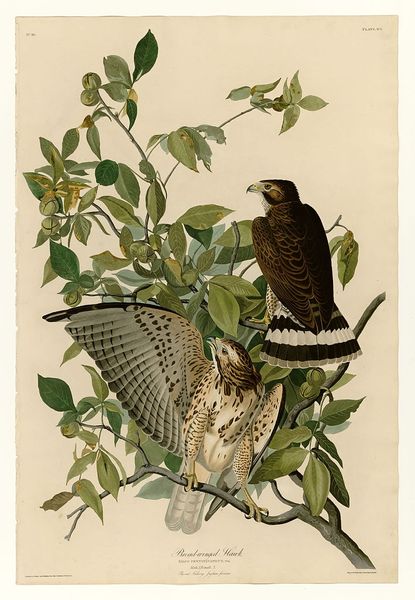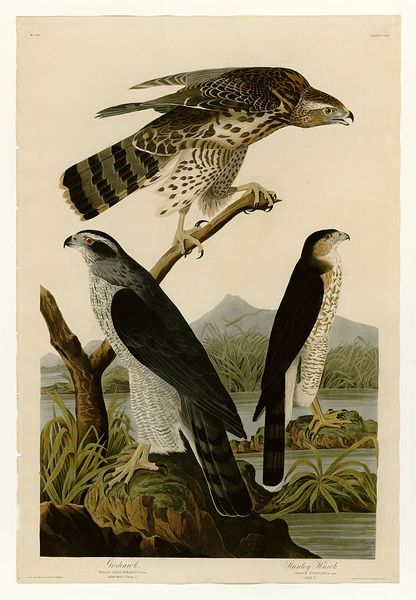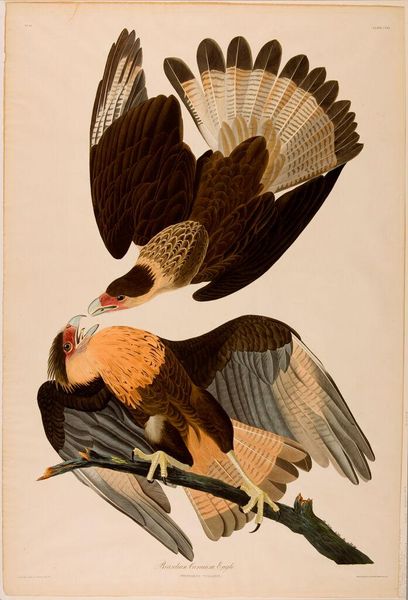
drawing, painting, watercolor
#
drawing
#
painting
#
landscape
#
bird
#
watercolor
#
surrealism
#
watercolour illustration
#
botany
#
naturalism
Copyright: Public domain
Editor: Here we have Audubon’s "Plate 71 Winter Hawk," rendered in watercolor, painting and drawing mediums. The hawk dominates the scene, fiercely clutching its prey. There's a certain drama in the muted tones that evokes a palpable sense of winter, and impending doom for the frog! What do you make of this dramatic piece? Curator: Ah, Audubon! He wasn't just illustrating birds, he was staging mini-dramas of the American wilderness. Notice how the blades of grass almost encircle the hawk and its struggling dinner? They're participants, almost witnesses to the primal scene. The so-called 'surrealism' the tags mention could come from the hyperreal quality, almost theatricality of it. Do you see the detail in those feathers, almost meticulously individual? Editor: Yes! It’s incredibly lifelike. It's like a snapshot of a real, fleeting moment, but with the intensity cranked up. It makes you feel like you're right there. Curator: Exactly! And there's a curious tension there. The precision is almost scientific, yet there’s such dynamism in the bird’s posture. He's capturing data, yet expressing a feeling, perhaps the power and ruthlessness needed for survival? What do you think about how that naturalism clashes or enhances the raw feeling present? Editor: I think it does both, and brilliantly. The scientific precision roots it in reality, while the heightened drama amplifies the emotional impact. You believe it *and* you feel it. Curator: It's in that tension between art and science where Audubon truly sings. He captures not just *what* the bird is but *how* it lives in its habitat, that feeling as you say. Something to consider about the place for 'winter hawks' like these in nature as well, eh? Editor: Definitely. It’s a really thought-provoking depiction. I came in seeing a detailed illustration and I'm leaving with a deeper appreciation for how much more it conveys about nature and the artistic eye.
Comments
No comments
Be the first to comment and join the conversation on the ultimate creative platform.
